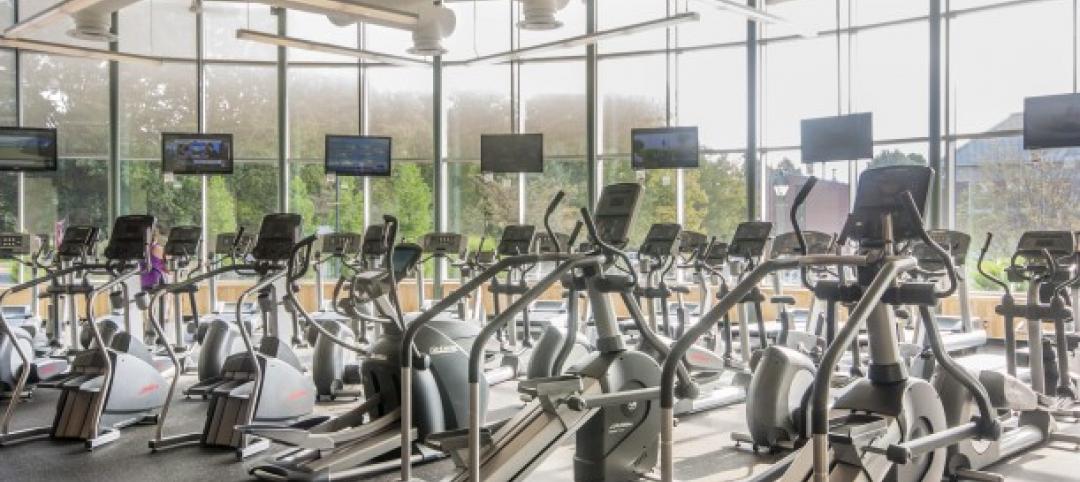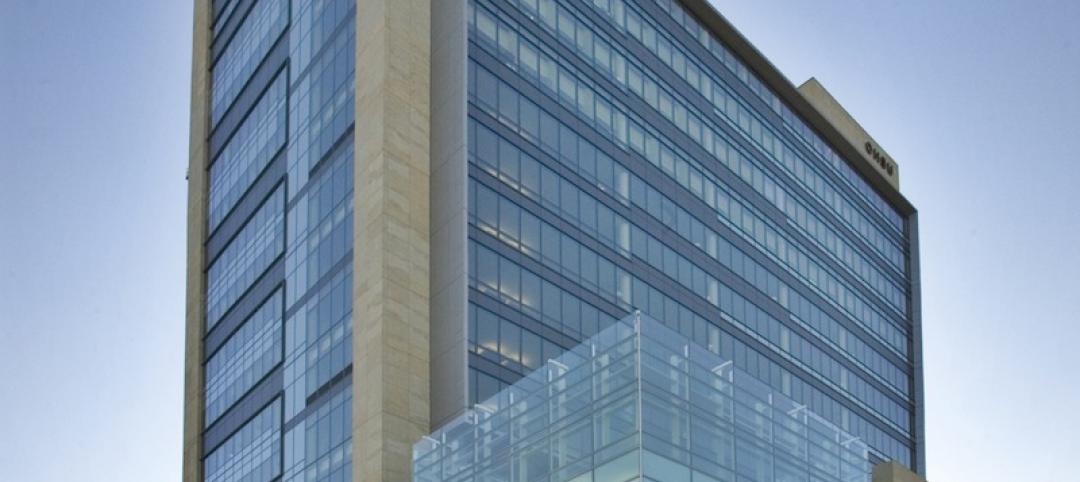Burns & McDonnell, which ranked third among Engineering/Architecture firms on BD+C’s 2018 Giants list, is launching an ambitious growth campaign that includes hiring at least 1,000 employees annually “for the foreseeable future,” and increasing the size of its World Headquarters in Kansas City, Mo., by 22%.
By year’s end, Burns & McDonnell expects to have 6,650 employees, more than half of whom will be working outside of Kansas City. The company has 11 regional offices in North America, and seven offices scattered across Europe, Africa, Asia, and the Middle East.
A 142,000-sf addition to its headquarters, which the firm is designing and building, is scheduled for completion by the summer of 2020. The company’s existing four-story 310,000-sf headquarters building opened in 2016 on a 34-acre campus in South Kansas City.
The $42 million new construction project is expected to commence in a week or two, beginning with a 550-slot parking garage, according to Brittany Swartz, a project manager in the firm’s Commercial Architecture group. The headquarters expansion will include 42 conference rooms, two large training rooms, and 780 work spaces.
Burns & McDonnell reported nearly $3 billion in revenue generated in 2017, of which $290.2 million derived from services provided for nonresidential building in several sectors that include commercial, retail, institutional, aviation, military, and manufacturing.
The firm is expanding to provide “full service solutions” for project owners that are seeking greater scheduling and budgeting certainty. Ray Kowalik, a 31-year company veteran who was named its CEO and chairman last year, adds that Burns & McDonnell had been growing and a 10-12% annual clip, which he believes can be boosted to 15%.
He cites four trends that are driving growth:
•A robust economy, favorable corporate tax law changes, and low energy prices, all of which are spurring investments in the U.S., especially in the chemicals market which is one of the firm’s largest sectors;
•The shift toward natural gas and renewable energy production that’s creating opportunities in the transmission, distribution, and generation markets;
•Greater government investment in resilience to secure and modernize aging facilities; and
•Mushrooming airport passenger traffic, and the need to find new ways to alleviate congestion at domestic and foreign terminals.
Burns & McDonnell shouldn’t have too much trouble meeting its hiring goals: it receives about 80,000 resumes per year, and the company has already hired 1,000 people in 2018, as of today’s announcement. It expects its hiring number to top out at 1,400 this year. “We’re a company that a lot of people want to work for,” says Kowalik. (In prior years, the company would typically offer employment to between 300 and 400 people, with 90% of applicants accepting.)
Kowalik says Burns & McDonnell already has a pretty good system in place for assimilating new hires, which includes extensive training and mentoring. (He said the company’s attrition rate is about 5% annually.)
While the power, gas, oil, and chemicals sectors are among the markets driving growth, Kowalik says his company is also expanding its nonresidential building activities, notably in the areas of office and multitenant apartment construction. “We’re extremely busy in Kansas City,” he says, having recently completed a new office building there for Creative Planning, a local wealth-management firm.
Kowalik adds that new tax policy is sparking “multibillion-dollar projects” in the chemicals industry, which are likely to trigger new commercial construction that supports that business. He expects a similar “trickle down” effect from oil and gas.
Historically, Burns & McDonnell has grown organically, “one employee at a time,” says Kowalik. But in recent years it has bolstered its presence on the construction side with acquisitions of two contractors, AZCO Inc. in Wisconsin and Ref-Chem in Texas.
Kowalik says that it’s possible that his company might seek out joint-venture construction partners. But he hedged about future acquisitions. “The minute I say ‘we’re interested,’ we get 20 calls.”
He is concerned, though, about the skilled-labor shortage, and thinks the AEC industry needs to take a more active role in outreach and training.
Related Stories
| Nov 8, 2013
Walkable solar pavement debuts at George Washington University
George Washington University worked with supplier Onyx Solar to design and install 100 sf of walkable solar pavement at its Virginia Science and Technology Campus in Ashburn, Va.
| Nov 7, 2013
Fitness center design: What do higher-ed students want?
Campus fitness centers are taking their place alongside student centers, science centers, and libraries as hallmark components of a student-life experience. Here are some tips for identifying the ideal design features for your next higher-ed fitness center project.
| Nov 6, 2013
Green hotel trends: Industry expands its sustainability focus beyond laundry
There’s more to creating a sustainable hotel than saving water and power by asking guests to reuse their towels.
| Nov 6, 2013
Energy-efficiency measures paying off for commercial building owners, says BOMA study
The commercial real estate industry’s ongoing focus on energy efficiency has resulted in a downward trend in total operating expenses (3.9 percent drop, on average), according to BOMA's Experience Exchange Report.
| Nov 6, 2013
PECI tests New Buildings Institute’s plug load energy use metrics at HQ
Earlier this year, PECI used the NBI metrics to assess plug load energy use at PECI headquarters in downtown Portland, Ore. The study, which informed an energy-saving campaign, resulted in an 18 percent kWh reduction of PECI’s plug load.
| Nov 5, 2013
Net-zero movement gaining traction in U.S. schools market
As more net-zero energy schools come online, school officials are asking: Is NZE a more logical approach for school districts than holistic green buildings?
| Nov 5, 2013
New IECC provision tightens historic building exemption
The International Energy Conservation Code has been revised to eliminate what has been seen as a blanket exemption for historic buildings.
| Nov 5, 2013
Living Building Challenge clarifies net-zero definitions and standards
The Living Building Challenge has released the Net Zero Energy Building Certification to provide clearer definitions regarding what net zero really means and how it is to be achieved.
| Nov 5, 2013
Oakland University’s Human Health Building first LEED Platinum university building in Michigan [slideshow]
Built on the former site of a parking lot and an untended natural wetland, the 160,260-sf, five-story, terra cotta-clad building features some of the industry’s most innovative, energy-efficient building systems and advanced sustainable design features.
| Nov 4, 2013
Architecture and engineering industry outlook remains positive on all major indicators
While still below pre-recession levels, all of the key indicators in the latest Quarterly Market Forecast (QMF) report from PSMJ Resources remain in positive territory.

















